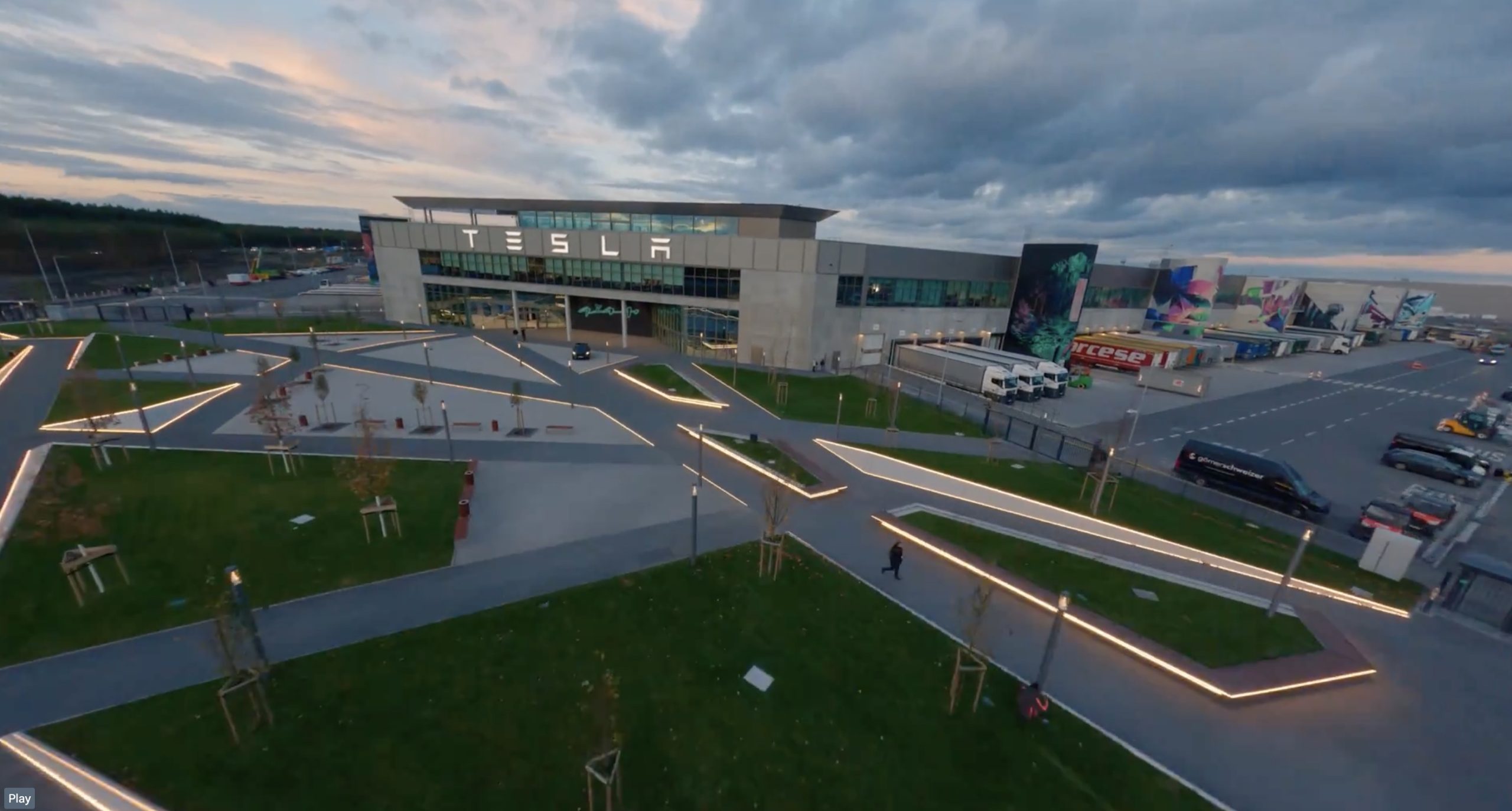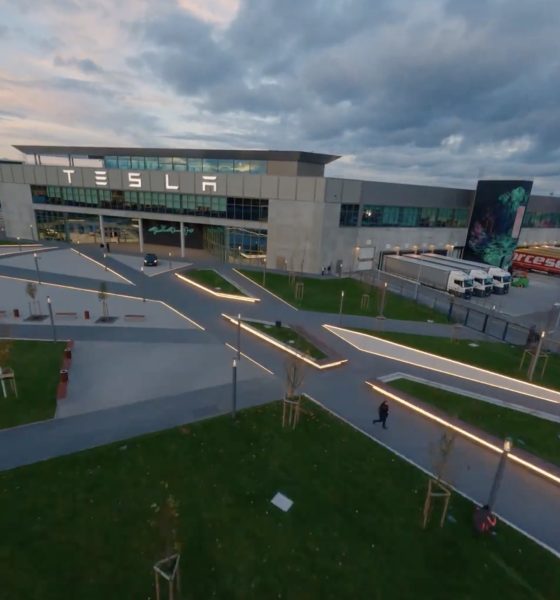

News
Tesla Sweden vs IF Metall Strike Recap: sympathy strikes, lawsuits & more [Editorial]
Tesla Sweden and IF Metall conflict is hitting its third month, and a lot has happened since it began.
Tesla’s Lawsuits
IF Metall has gained a lot of support within Sweden from other trade unions, including Seko, which brought Postnord into the strike. Through Postnord, IF Metall struck Tesla with a big blow as the courier refused to deliver new license plates to the automaker. Postnord’s blockade on Tesla has affected the new vehicle deliveries.
In response, Tesla filed lawsuits against Postnord and the Swedish Transport Agency, which refuses to switch courier services. The automaker claims at least 1,000 new license plates are still not within its possession. Tesla and its customers recently found a loophole to Postnord’s blockade, enabling deliveries to continue.
However, IF Metall’s strike against Tesla continues. It has also gained support from other Nordic countries, leading Tesla to seek a government affairs specialist.
Tesla seeks Government Affairs Specialist for Nordic countries
Tesla Sweden posted a job position for a government affairs specialist amid the ongoing IF Metall Strike.
Tesla Sweden’s Job post reads:
“Tesla is seeking an all-round Stockholm- or Oslo-based Nordics public policy and business development manager to join its growing EMEA team. The role is to help ensure that the political, regulatory, and fiscal frameworks in the ‘Nordics’ (Norway, Sweden, Denmark, Finland, and Iceland) support Tesla’s mission, especially by promoting a rapid transition to zero-emission surface transport and a safe and secure transition to assisted automated driving.”
Sympathy Strikes Against Tesla
IF Metall’s strike against Tesla, which started in October, has reached other Nordic countries like Denmark and Norway. The Swedish union has gained support through sympathy strikes by other trade unions and countries as opposed to Tesla employees working in Sweden.
Norway’s governing Labor Party summoned Tesla to parliament last week. The Texas-based automaker was called to parliament to answer questions about IF Metall’s ongoing strike. Tesla’s Norwegian boss, Axel Tangen, stated that the company follows Norwegian laws, including those related to the labor market.
Denmark and Norway have agreed to block Tesla shipments passing through their countries and heading to Sweden. A few Nordic pension funds have also put Tesla on its watchlist, closely observing how the situation with IF Metall will play out. One Danish pension fund, Pension Danmark, has put TSLA on its exclusion list. Other Nordic pension funds are approaching the conflict between Tesla Sweden and IF Metall with more caution.
Background
IF Metall’s strike against Tesla aims to push the automaker to sign a collective agreement, a standard contract between employers and unions in Sweden. Even if it is common in Sweden, collective agreements do not appear compulsory for a company. Tesla has refused to sign a collective agreement with IF Metall, clarifying that its payment scheme and treatment of workers are on par with, if not better than, those described in any contract with a union.
Opinion
If Tesla were to sign a collective agreement with IF Metall, it would only cover employees “within its contractual area” or those who are members of the Swedish union. Based on previous reports, IF Metall members usually exclude white-collar workers. Most IF Metall members at Tesla appear to be mechanics working at the automaker’s service centers.
Tesla Club Sweden recently conducted a count on how many mechanics actually supported IF Metall’s strike and came out with a total number of 13 workers. The Swedish union claims Tesla Club Sweden’s numbers are drastically underestimated.
The Teslarati team would appreciate hearing from you. If you have any tips, contact me at maria@teslarati.com or via X @Writer_01001101.

News
Tesla FSD fleet is nearing 7 billion total miles, including 2.5 billion city miles
As can be seen on Tesla’s official FSD webpage, vehicles equipped with the system have now navigated over 6.99 billion miles.

Tesla’s Full Self-Driving (Supervised) fleet is closing in on almost 7 billion total miles driven, as per data posted by the company on its official FSD webpage.
These figures hint at the massive scale of data fueling Tesla’s rapid FSD improvements, which have been quite notable as of late.
FSD mileage milestones
As can be seen on Tesla’s official FSD webpage, vehicles equipped with the system have now navigated over 6.99 billion miles. Tesla owner and avid FSD tester Whole Mars Catalog also shared a screenshot indicating that from the nearly 7 billion miles traveled by the FSD fleet, more than 2.5 billion miles were driven inside cities.
City miles are particularly valuable for complex urban scenarios like unprotected turns, pedestrian interactions, and traffic lights. This is also the difference-maker for FSD, as only complex solutions, such as Waymo’s self-driving taxis, operate similarly on inner-city streets. And even then, incidents such as the San Francisco blackouts have proven challenging for sensor-rich vehicles like Waymos.
Tesla’s data edge
Tesla has a number of advantages in the autonomous vehicle sector, one of which is the size of its fleet and the number of vehicles training FSD on real-world roads. Tesla’s nearly 7 billion FSD miles then allow the company to roll out updates that make its vehicles behave like they are being driven by experienced drivers, even if they are operating on their own.
So notable are Tesla’s improvements to FSD that NVIDIA Director of Robotics Jim Fan, after experiencing FSD v14, noted that the system is the first AI that passes what he described as a “Physical Turing Test.”
“Despite knowing exactly how robot learning works, I still find it magical watching the steering wheel turn by itself. First it feels surreal, next it becomes routine. Then, like the smartphone, taking it away actively hurts. This is how humanity gets rewired and glued to god-like technologies,” Fan wrote in a post on X.
News
Tesla starts showing how FSD will change lives in Europe
Local officials tested the system on narrow country roads and were impressed by FSD’s smooth, human-like driving, with some calling the service a game-changer for everyday life in areas that are far from urban centers.

Tesla has launched Europe’s first public shuttle service using Full Self-Driving (Supervised) in the rural Eifelkreis Bitburg-Prüm region of Germany, demonstrating how the technology can restore independence and mobility for people who struggle with limited transport options.
Local officials tested the system on narrow country roads and were impressed by FSD’s smooth, human-like driving, with some calling the service a game-changer for everyday life in areas that are far from urban centers.
Officials see real impact on rural residents
Arzfeld Mayor Johannes Kuhl and District Administrator Andreas Kruppert personally tested the Tesla shuttle service. This allowed them to see just how well FSD navigated winding lanes and rural roads confidently. Kruppert said, “Autonomous driving sounds like science fiction to many, but we simply see here that it works totally well in rural regions too.” Kuhl, for his part, also noted that FSD “feels like a very experienced driver.”
The pilot complements the area’s “Citizen Bus” program, which provides on-demand rides for elderly residents who can no longer drive themselves. Tesla Europe shared a video of a demonstration of the service, highlighting how FSD gives people their freedom back, even in places where public transport is not as prevalent.
What the Ministry for Economic Affairs and Transport says
Rhineland-Palatinate’s Minister Daniela Schmitt supported the project, praising the collaboration that made this “first of its kind in Europe” possible. As per the ministry, the rural rollout for the service shows FSD’s potential beyond major cities, and it delivers tangible benefits like grocery runs, doctor visits, and social connections for isolated residents.
“Reliable and flexible mobility is especially vital in rural areas. With the launch of a shuttle service using self-driving vehicles (FSD supervised) by Tesla in the Eifelkreis Bitburg-Prüm, an innovative pilot project is now getting underway that complements local community bus services. It is the first project of its kind in Europe.
“The result is a real gain for rural mobility: greater accessibility, more flexibility and tangible benefits for everyday life. A strong signal for innovation, cooperation and future-oriented mobility beyond urban centers,” the ministry wrote in a LinkedIn post.
News
Tesla China quietly posts Robotaxi-related job listing
Tesla China is currently seeking a Low Voltage Electrical Engineer to work on circuit board design for the company’s autonomous vehicles.

Tesla has posted a new job listing in Shanghai explicitly tied to its Robotaxi program, fueling speculation that the company is preparing to launch its dedicated autonomous ride-hailing service in China.
As noted in the listing, Tesla China is currently seeking a Low Voltage Electrical Engineer to work on circuit board design for the company’s autonomous vehicles.
Robotaxi-specific role
The listing, which was shared on social media platform X by industry watcher @tslaming, suggested that Tesla China is looking to fill the role urgently. The job listing itself specifically mentions that the person hired for the role will be working on the Low Voltage Hardware team, which would design the circuit boards that would serve as the nervous system of the Robotaxi.
Key tasks for the role, as indicated in the job listing, include collaboration with PCB layout, firmware, mechanical, program management, and validation teams, among other responsibilities. The role is based in Shanghai.
China Robotaxi launch
China represents a massive potential market for robotaxis, with its dense urban centers and supportive policies in select cities. Tesla has limited permission to roll out FSD in the country, though despite this, its vehicles have been hailed as among the best in the market when it comes to autonomous features. So far, at least, it appears that China supports Tesla’s FSD and Robotaxi rollout.
This was hinted at in November, when Tesla brought the Cybercab to the 8th China International Import Expo (CIIE) in Shanghai, marking the first time that the autonomous two-seater was brought to the Asia-Pacific region. The vehicle, despite not having a release date in China, received a significant amount of interest among the event’s attendees.








